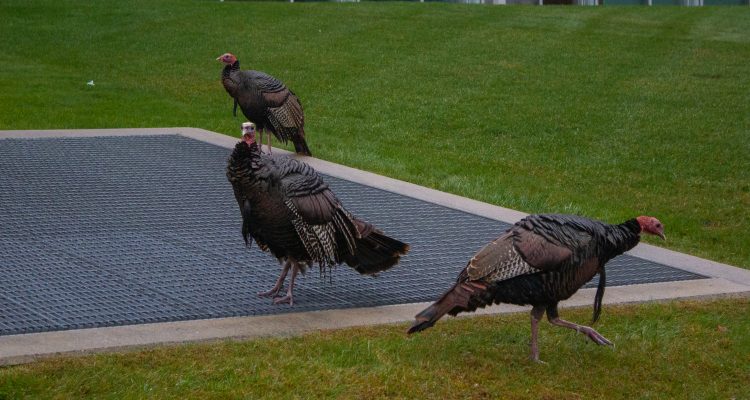There are only a few things in this world that juxtapose as greatly as the majestic look of a turkey, and their horrible personality. It might not be a scientific fact, but they are generally in practice, awful creatures. Many videos propagate local social media of Stag Bus drivers kicking them off the bus, and the ghastly brown creatures screaming back. Or, they capture poor First-Year students, already overwhelmed by the simple fact of no longer being in high school now being further traumatized by the desperate sprint of a bird chasing after them.
But, the question always remains: how did they end up here in the first place?
The Connecticut Department of Energy and Environmental Protection states that the turkeys were around even when the first settlers arrived. Due to a few reasons, the population of the turkey dwindled, until wild turkeys were captured and “translocated using a rocket net” restoring the population in 169 Connecticut towns.
Now we have a population of “Meleagris gallopavo silvestris,” the specific subspecies of turkeys, all across campus.
If you want some more information on how to tell the male versus female turkeys apart, I’ve got a rundown for you!
The “toms” or male turkeys are dark with “iridescent” feathers. The top of their head is brightly colored in red, blue, or white. The “hens” or female turkeys are usually a lighter brown, and the top of their head is only a pale blue. A good indicator of their difference is that the females typically lack the beard.
You’d get really lucky if you could catch a look at some of the babies.
Around late April or May, the turkey population grows in size, and tiny little baby turkey furballs are born to wobble around campus. It almost makes you forget that they eventually become hateful, angry creatures that make you gently walk around them on your walk to class.
In the Boston Globe, they highlighted some of the turkeys’ more… full sarcasm here… kind behavior. They go on to say that especially during mating season, “Turkeys may attempt to dominate or attack people that they view as subordinates.”
They continue to say that often they’ll chase something shiny because they think it’s another turkey.
In even more hilarious news, the town of Brookline, Mass. once wrote a warning on their website stating that “Wild turkeys have a ‘pecking order’ and people who act fearfully will be treated as subordinates.” They went on to ask residents to be “aggressive” towards the birds.
I’m worried about recommending this to anyone who’s reading this. I truly don’t want to run into someone running at a turkey or growling at them in some way.
Although we might complain and film videos of their terrifying behavior, they’re truly a part of the campus community. Life just wouldn’t be the same without a panicked walk through the grass with the turkeys taking up the whole sidewalk or watching the birds run into the glass walls of the Barone Campus Center.
Let’s just hope our tentative trust in each other stays the same and no “aggression” is ever needed.


Leave a Reply